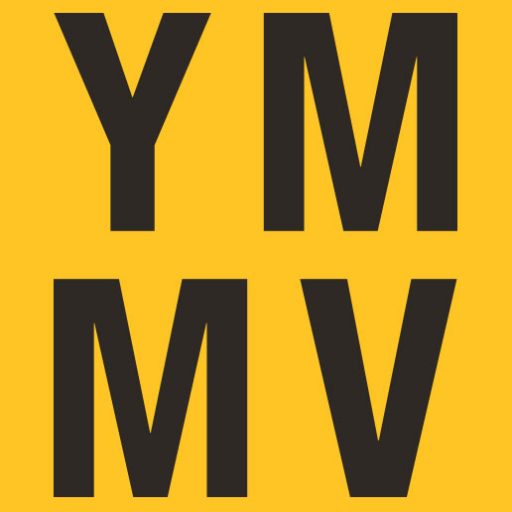When you start to get into the world of using frequent flyer miles, you discover that your miles (at least for the 3 “big” airlines, a.k.a. the “Legacy” airlines, Delta, American and United) can often be used on a variety of airlines. This is thanks to the advent of airline alliances.
What are airline alliances?
This is a good beginner’s guide to airline alliances. The lists are ever-changing (in fact, the chairman of one of the alliances, oneworld, even said outright that he talks to several (airlines) to become part of their alliance). However, it’s still a decent way to get a taste of what they are.
The major alliances
The “big 3” airline alliances were all launched 20+ years ago. They include:
- oneworld – Launched February 1, 1999
Currently includes Alaska, American, British Airways, Cathay Pacific, Fiji Airways (a connect partner), Finnair, Iberia, Japan Airlines, Malaysia Airlines, Qantas, Qatar Airways, Royal Jordanian, Royal Air Maroc and SriLankan Airlines. Oman Air is scheduled to join oneworld in 2024. - Skyteam – Launched June 22, 2000
Currently includes Aerolineas Argentinas, AeroMexico, Air Europa, Air France, China Airlines, China Eastern, Czech Airlines, Delta, Garuda Indonesia, ITA Airways, Kenya Airways, KLM, Korean Air, MEA, Saudia, Tarom, Vietnam Airlines, Virgin Atlantic and Xiamen Air - Star Alliance – Launched May 14, 1997
Currently includes Aegean, Air Canada, Air China, Air India, Air New Zealand, ANA, Asiana Airlines, Austrian, Avianca, Brussels Airlines, Copa Airlines, Croatia Airlines, Egyptair, Ethiopian, Eva Air, LOT Polish Airlines, Lufthansa, SAS, Shenzhen Airlines, Singapore Airlines, South African Airways, Swiss, Air Portugal, Thai, Turkish Airlines and United.
The smaller alliances
Besides the “big 3” alliances, there are also 3 smaller airlines alliances that we tend to hear much less about:
Vanilla Alliance
In the summer of 2010, Seychelles, Mauritius, Madagascar, the Comoros, Réunion, and Mayotte united under the brand “Vanilla Islands” to promote tourism in and to the Indian Ocean area. This eventually evolved to become the Vanilla Alliance, the first airline alliance made after the “Big 3.” It launched on September 21, 2015.
The Vanilla Alliance currently includes:
- Air Austral (France)
- Air Madagascar (Madagascar)
- Air Mauritius (Mauritius)
- Air Seychelles (Seychelles)
- Int’Air Îles (previously named Inter Îles Air through March 2015) (the Comoros)
All of the airlines within the Vanilla Alliance operate in the Indian Ocean region. They’re also all based in sovereign states that are members of the Indian Ocean Commission or French overseas territories in the Indian Ocean.
Airlines that are part of the Vanilla Alliance fly to a total of 89 airports in 26 countries.
U-FLY Alliance
The U-FLY alliance became the world’s first alliance of low-cost carriers when it was launched on January 18, 2016.
Made up of low-cost airlines from Mainland China, South Korea and, until 2019, Hong Kong, the alliance was formed for several reasons:
- China’s provinces vary in what is and isn’t allowed for airlines, which makes it difficult for two or more airlines from different regions to merge. The alliance was formed to help smaller airlines grow larger without 2 or more merging to become one company in several different provinces.
- The regions preferred to have a local airline with a local identity that can advocate for the area it’s in.
Having an alliance of low-cost carriers allowed both to happen.
U-FLY Alliance currently includes:
- Eastar Jet (South Korea)
- Lucky Air (China)
- Urimqi Air (China)
- West Air (China)
All four airlines are under the Hainan Airlines parent company.
HK Express was one of the main founders of the Vanilla Alliance. However, the airline left the alliance in 2019 when it became a subsidiary of Cathay Pacific (a oneworld member).
Value Alliance
Launched on May 16, 2016, Value Alliance is the world’s second alliance that’s made purely of low-cost carriers. However whereas U-FLY Alliance’s airlines are all based in China and South Korea, and Vanilla’s from the Indian Ocean area, Value Alliance’s airlines all stem out of the Asia-Pacific region.
Value Alliance currently includes:
- Cebu Pacific (The Philippines)
- Cebgo (a subsidiary of Cebu Pacific)
- Jeju Air (South Korea)
- Nok Air (Thailand)
- Scoot (Singapore)
Former members of Value Alliance include NokScoot (Thailand. Defunct as of June 2020 – thanks, COVID), Tigerair Australia (Australia. Defunct as of March 2020. Also a victim of the COVID pandemic.), Tigerair (Singapore. Merged into Scoot in July 2017) and Vanilla Air (Japan. Own by ANA and merged into Peach Aviation in October 2019).
Value Alliance’s 5 airlines provide access to more than 160 destinations from 17 hubs across Australia, North Asia and South East Asia.
That’s cool! Why don’t we ever hear about these alliances?
My hunch is because they’re on the other side of the world ;-). I’m sure if you spent a significant amount of time in China, the Asia-Pacific area or the Indian Ocean, you would. Just like we hear about oneworld, Sky Team and Star Alliance here in the U.S. because each has at least one U.S.-based airline.
Why aren’t U.S.-based carriers members of these alliances?
Unlike oneworld, Skyteam and Star Alliance, which have airline members from around the globe, all three of these smaller alliances are more regional; U-FLY is composed of low-cost carriers from China and South Korea, Value Alliance is composed of low-cost carriers in the Asia-Pacific region, and Vanilla Alliance is made of airlines based in the Indian Ocean region. None of the U.S.-based airlines fit any of those criteria.
OK, that makes sense. But then why don’t our local low-cost airlines make their own alliance?
Our current low-cost and ultra-low cost airlines in the U.S. are generally in competition with each other. I don’t think any alliances of U.S.-based airlines are going to come out of this country any time soon.
This isn’t to say that any of our lower cost carriers couldn’t form an alliance with the likes of Swoop, Sunwing, Flair, etc. out of Canada and/or Volaris, Viva Aerobus, Interjet, etc. out of Mexico. Alliances with airlines based in Central and South America could also be potential. I guess if the airlines thought such an alliance would be beneficial to all involved, it could become a “thing” in the future. But for now? Apparently not.
Want to comment on this post? Great! Read this first to help ensure it gets approved.
Want to sponsor a post, write something for Your Mileage May Vary, or put ads on our site? Click here for more info.
Like this post? Please share it! We have plenty more just like it and would love it if you decided to hang around and sign up to get emailed notifications of when we post.
Whether you’ve read our articles before or this is the first time you’re stopping by, we’re really glad you’re here and hope you come back to visit again!
This post first appeared on Your Mileage May Vary
Join our mailing list to receive the latest news and updates from our team.

